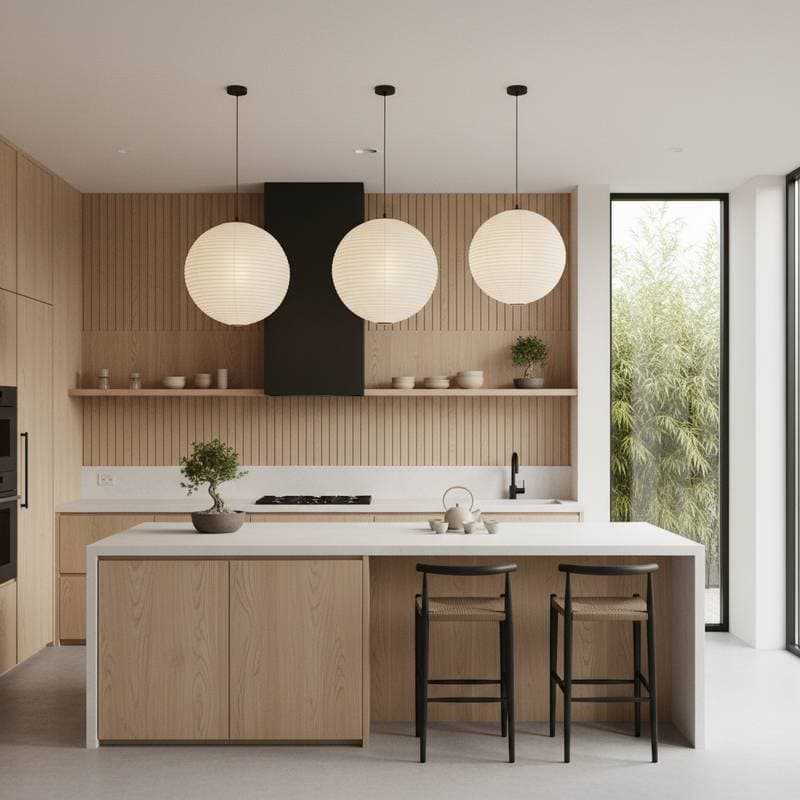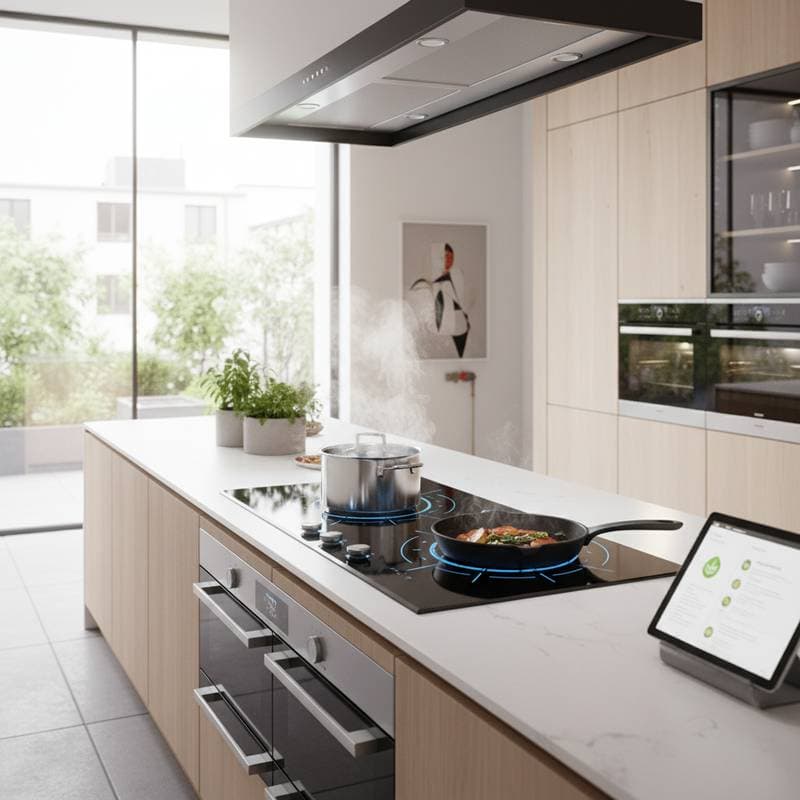Gas Stove Bans Fuel Induction Cooking Surge
Why Kitchen Electrification Is a Priority
Kitchen design has evolved beyond aesthetics to focus on health, safety, and regulatory compliance. Recent gas stove bans, such as New York City's 2025 mandate for all-electric new residential builds and the United Kingdom's draft rules targeting 2028, have accelerated the shift toward electrification. This trend is driving rapid adoption of induction cooking, increasing demand for electric appliances, and introducing new technical and design considerations for homeowners and contractors. Whether you are planning a remodel or managing a new build, understanding these changes is essential for a smooth project.
This article provides a practical, contractor-focused guide to navigating gas stove bans and induction technology. It covers the impact of regulations on your jobsite, the mechanics of induction cooking, budgeting tips, and key installation challenges to avoid delays or costly revisions.
Gas Stove Bans as Project Catalysts
Local and regional regulations are not arbitrary; they stem from broader policies aimed at reducing residential emissions and indoor air pollutants from combustion. These rules translate into stricter permitting for electric-only appliances, more rigorous inspections for dedicated circuits, and growing client interest in induction cooktops. Industry data reflects a steady rise in induction sales, with builders increasingly specifying these units in multiunit developments to future-proof designs. For contractors, these bans offer predictable requirements that can be integrated into project planning with early preparation.
Understanding Induction Cooking and Its Jobsite Impact
Induction cooking relies on electromagnetic fields to heat cookware directly, using a copper coil beneath a glass-ceramic surface. Unlike gas or traditional electric stoves, the cooktop itself remains relatively cool, as heat is generated within the pan. This technology reshapes both mechanical and electrical demands during installation.
Key considerations for projects include:
- Energy Efficiency: Induction transfers up to 90 percent of energy to the cookware, lowering operating costs and often qualifying for utility rebates.
- No Combustion: Eliminating on-site burning simplifies building code compliance and reduces ventilation requirements tied to gas.
- Rapid Heat Control: Faster response times influence kitchen layouts, allowing cooktops closer to living areas since steam and odors are more manageable.
Emerging Trends in Induction Products
Modern induction cooktops often feature smart technology, such as Wi-Fi connectivity, built-in sensors, and flexible cooking zones that accommodate pans of varying sizes. Design innovations include flush-mount options, sleek black-glass finishes for seamless integration into countertops, and built-in downdraft vents ideal for open-plan spaces. Cookware compatibility is no longer a barrier, with affordable induction-ready sets made of cast iron or compatible stainless steel widely available. Contractors can use a simple magnet test to confirm suitability, minimizing client frustration at handover.
Installation Best Practices for Contractors
Electrical Planning
Most induction cooktops demand a dedicated 240-volt circuit, with standard 30-inch units requiring 30 amps and larger ranges or ovens needing 40 amps or more. Always assess the existing service capacity, accounting for other high-demand systems like electric vehicle chargers or HVAC units. Recommend oversizing conduit and reserving panel space for future upgrades to avoid mid-project revisions. Secure permits early, as inspections for new circuits often outpace appliance delivery timelines.
Ventilation and Layout
While induction eliminates flame-related ventilation needs, steam and grease still require effective airflow. Specify a minimum of 300 cubic feet per minute for open kitchens, prioritizing ducted systems over recirculating ones when feasible. Ensure at least two inches of clearance around the cooktop and verify that countertop materials can withstand heat, particularly for recessed installations.
Unit and Cookware Selection
Opt for models with 1800 to 2100 watts per zone for adequate power. Flexible cooking zones are ideal for larger or multiple pans, and inquire about serviceability to avoid high repair costs for sealed glass tops. Educate clients on compatible cookware and basic maintenance to prevent damage and warranty issues.
Budgeting for Induction Upgrades
Provide clients with a clear cost breakdown to set realistic expectations:
- Midrange 30-inch Cooktop: $1,500 to $2,200
- Dedicated Circuit Installation: $300 to $800, based on panel proximity
- Compatible Cookware Set (5-piece): $120 to $350
- Downdraft Vent (if needed): $600 to $1,200
- Smart Features Subscription: $0 to $150 annually, optional
Highlight potential utility rebates for electrification, but advise clients to confirm eligibility before factoring savings into budgets. Retailer financing options can also ease upfront costs.
Avoiding Common Installation Challenges
Several pitfalls can derail induction projects, including undersized electrical panels that trigger unexpected upgrades, hidden framing issues with flush-mount designs, and inadequate ventilation in open layouts leading to client dissatisfaction. Mitigate these by including load calculations in initial estimates, documenting all scope details in contracts, and demonstrating cookware compatibility and care tips during walkthroughs.
Real-World Project Insights
In an urban loft retrofit, a 36-inch flex-zone induction cooktop and downdraft vent replaced a gas range. A panel subfeed and 40-amp breaker upgrade kept change orders minimal, and the client noted a significant drop in cooking odors. Another project, a 1970s kitchen update, preserved original cabinetry with a low-profile black-glass unit and concealed ducting, qualifying for a rebate and reducing utility costs. These examples underscore the value of upfront planning and clear communication.
Preparing for the Future of Kitchen Tech
Manufacturers are developing induction systems compatible with solar power and battery storage, alongside adaptive cooking algorithms tailored to specific recipes. Anticipate expanded incentives for induction adoption, lowering costs for homeowners and simplifying specification for builders. Staying ahead of these trends ensures projects remain competitive and compliant with evolving standards.
Actionable Steps to Start Today
Begin with these immediate actions to streamline your next induction project:
- Arrange an electrical audit and request a load calculation for a dedicated 240-volt circuit.
- Select a cooktop model and verify installation clearances with your contractor before purchase.
- Integrate ventilation planning into the design phase to account for duct runs and fan capacity.
Gas stove bans are reshaping kitchen projects, but induction cooking offers a practical, efficient solution when approached systematically. Focus on electrical readiness, ventilation design, and detailed contracts to deliver successful outcomes and satisfied clients.










